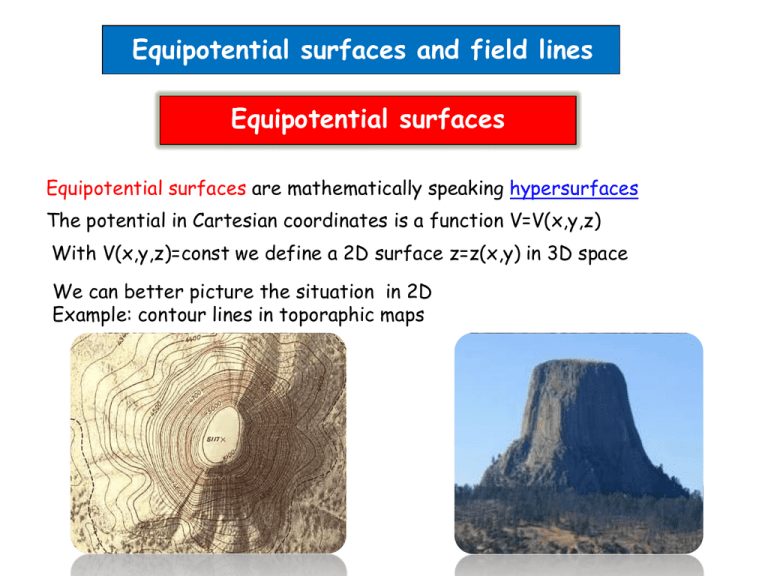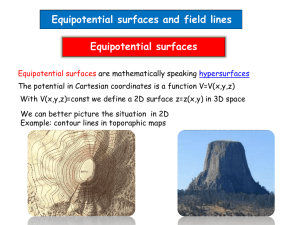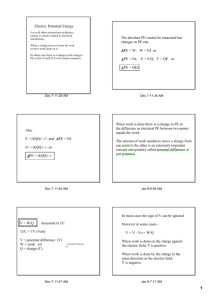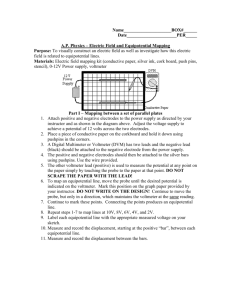Equipotential surfaces
advertisement

Equipotential surfaces and field lines Equipotential surfaces Equipotential surfaces are mathematically speaking hypersurfaces The potential in Cartesian coordinates is a function V=V(x,y,z) With V(x,y,z)=const we define a 2D surface z=z(x,y) in 3D space We can better picture the situation in 2D Example: contour lines in toporaphic maps z ( x, y ) x 2 y 2 z 2D surface in 3D space z ( x, y ) x 2 y 2 2 Contour line 1D equi-value “surface” y x 2 2 Note that one could consider z( x, y ) x 2 y 2 as equi-value surface of f ( x, y, z ) x y z 0 Some properties of equipotential surfaces -in general an equipotential surface is a hypersurface defined by V(x,y,z)=const -per definition V is the same everywhere on the surface If you move a test charge q0 on this surface the potential energy U= q0V remains constant no work done if E-field does no work alongb path of test charge on surface E-field normal surface E d r 0 E dr a It is a general property of the gradient of a function f f f that f ( x, y, z ) , , f ( x, y, z ) const 2.0 x y z f 2 x,2 y 1.5 1.0 0.5 0.0 Y f ( x, y ) x 2 y 2 1 Simple 2D example for this general property f ( x, y ) x y 2 f 2 x,2 y 2 -0.5 -1.0 -1.5 -2.0 -2.0 -1.5 -1.0 -0.5 0.0 X 0.5 1.0 1.5 2.0 -no point can be at different potentials equipotential surfaces never touch or intersect -field lines and equipotential surfaces are always perpendicular Examples from our textbook Young and Freedman University Physics page 799 point charge E-field lines Cross sections of equipotential surfaces How do we get the circle solution ? Remember V ( r ) Q V ( x, y , z 0) 4 0 r Q 4 0 x y 2 2 const Q x y 4 0const 2 2 Similar to higher field line density indicating stronger E-field Higher density of equipotential contour lines indicates a given change in the potential takes place with less distance visualization of stronger E-field because E V 2 Electric dipole Note, the electric field is in general not the same for points on an equipotential surface 2 equal positive charges Equipotentials and Conductors When all charges are at rest, the surface of a conductor is always an equipotential surface. Proof: We use the facts that i) the E-field is always perpendicular to an equipotential surface ii) E=0 inside a conductor We use ii) to show that (when all charges at rest) the E-field outside a conductor must be perpendicular to the surface at every point With i) that implies that surface of a conductor is equipotential surface E=0 inside a conductor because otherwise charges would move E tangent to surface inside conductor zero E tangent to surface (E) outside conductor zero E=0 just outside the conductor surface to ensure Since E=0 inside conductor Remember E is conservative and work along closed path must be zero Ed r 0 in the absence of any tangential component, E, E can only be perpendicular to the conducting surface Conductor Surface of a conductor





